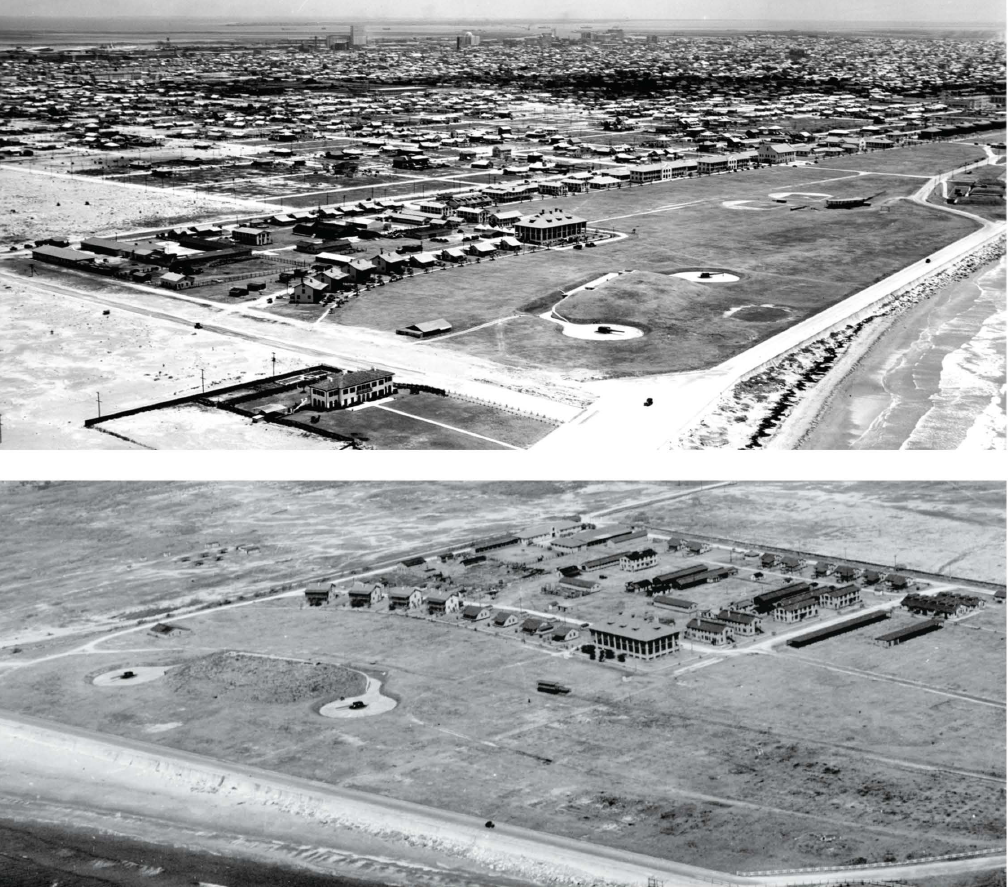A Look Back
From Coastal Defense to Coastal Destination
By John Hall
 During World War I and II, Galveston played a vital role in the nation’s coastal defense and naval operations. At the heart of that effort was Fort Crockett, a military reservation established in the late 1890s and named in honor of Texas hero David Crockett.
During World War I and II, Galveston played a vital role in the nation’s coastal defense and naval operations. At the heart of that effort was Fort Crockett, a military reservation established in the late 1890s and named in honor of Texas hero David Crockett.
Originally positioned along the Seawall between 45th and 49th Streets and later expanded to 57th Street, the fort was equipped with massive gun batteries, anti-aircraft guns, and searchlights.
During WWI, Fort Crockett served as an artillery training center, sending troops and equipment to the European front. In WWII, it was expanded and fortified to defend against German U-boats in the Gulf.
The fort also housed a prisoner-of-war camp located between 53rd and 57th Streets and served as a hub for coastal surveillance and military logistics. One of its most formidable installations was Battery Hoskins, a reinforced concrete casemate built to withstand naval bombardment.
After the war, the fort was decommissioned, and its massive bunkers sat dormant for decades - until Galveston native and visionary developer George Mitchell saw potential in the site. In the early 1980s, Mitchell purchased the land and transformed the former military stronghold into a luxury destination.
In 1984, The San Luis Resort opened atop the old Battery Hoskins, blending modern elegance with the enduring strength of its historic foundation. Today, the resort’s pool and wedding gazebo rest atop the very casemates that once guarded the Texas coast.